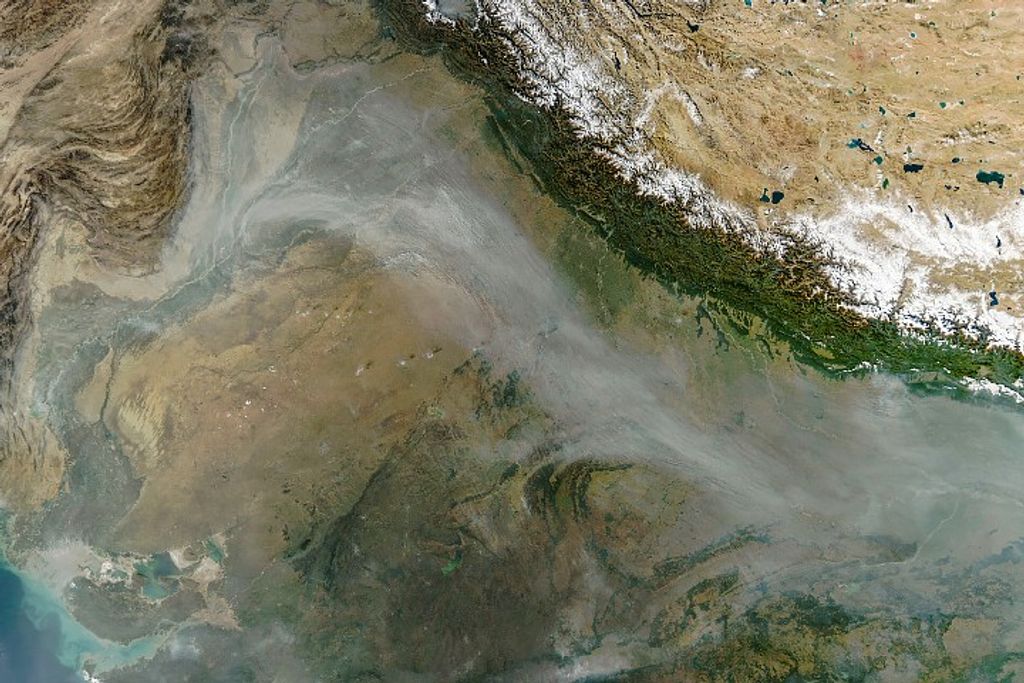1 min read
Hubble’s Red-White-and-Blue View Presents Jupiter in Different Colors

An image of Jupiter taken by NASA's Hubble Space Telescope in ultraviolet/visible/near-infrared light on August 25, 2020 is giving researchers an entirely new view of the giant planet and offers insights into the altitude and distribution of the planet's haze and particles. This complements Hubble’s visible-light pictures that show the ever-changing cloud patterns.
In this photo, the parts of Jupiter’s atmosphere that are at higher altitude, especially over the poles, look red from atmospheric particles absorbing ultraviolet light. Conversely, the blue-hued areas represent the ultraviolet light being reflected off the planet.
A new storm at upper left, which erupted on August 18, 2020, is grabbing the attention of scientists in this image. The “clumps” trailing the white plume appear to be absorbing ultraviolet light, similar to the center of the Great Red Spot, and Red Spot Jr. directly below it. This provides researchers with more evidence that this storm may last longer on Jupiter than most storms.
About the Object
- DistanceDistanceThe physical distance from Earth to the astronomical object. Distances within our solar system are usually measured in Astronomical Units (AU). Distances between stars are usually measured in light-years. Interstellar distances can also be measured in parsecs.At the time of observations, the planet was 4.37AU from Earth (406 million miles).
- DimensionsDimensionsThe physical size of the object or the apparent angle it subtends on the sky.Jupiter is approximately 89,500 miles across along its equator
About the Data
- Data DescriptionData DescriptionProposal: A description of the observations, their scientific justification, and the links to the data available in the science archive.
Science Team: The astronomers who planned the observations and analyzed the data. "PI" refers to the Principal Investigator.The HST observations include those from the Program 15929 (A. Simon). - InstrumentInstrumentThe science instrument used to produce the data.WFC3/UVIS
- Exposure DatesExposure DatesThe date(s) that the telescope made its observations and the total exposure time.August 25, 2020
- FiltersFiltersThe camera filters that were used in the science observations.275W, 547M, FQ889N
- Object NameObject NameA name or catalog number that astronomers use to identify an astronomical object.Jupiter
- Object DescriptionObject DescriptionThe type of astronomical object.Jupiter in visible light and ultraviolet/visible/near-infrared light
- Release DateSeptember 17, 2020
- Science ReleaseHubble Captures Crisp New Portrait of Jupiter’s Storms
- Credit

These images are a composite of separate exposures acquired by the WFC3 instrument on the Hubble Space Telescope. Several filters were used to sample narrow wavelength ranges. The color results from assigning different hues (colors) to each monochromatic (grayscale) image associated with an individual filter. In this case, the assigned colors are: Left image- Blue: F395N Green: F502N Red: F631N Right image- Blue: 275W Green: 547M Red: FQ889N
Related Images & Videos

Jupiter and Europa 2020
This latest image of Jupiter, taken by NASA’s Hubble Space Telescope on August 25, 2020, was captured when the planet was 406 million miles from Earth. Hubble’s sharp view is giving researchers an updated weather report on the monster planet’s turbulent atmosphere, including a...
Share
Details
Claire Andreoli
NASA’s Goddard Space Flight Center
Greenbelt, Maryland
claire.andreoli@nasa.gov





























